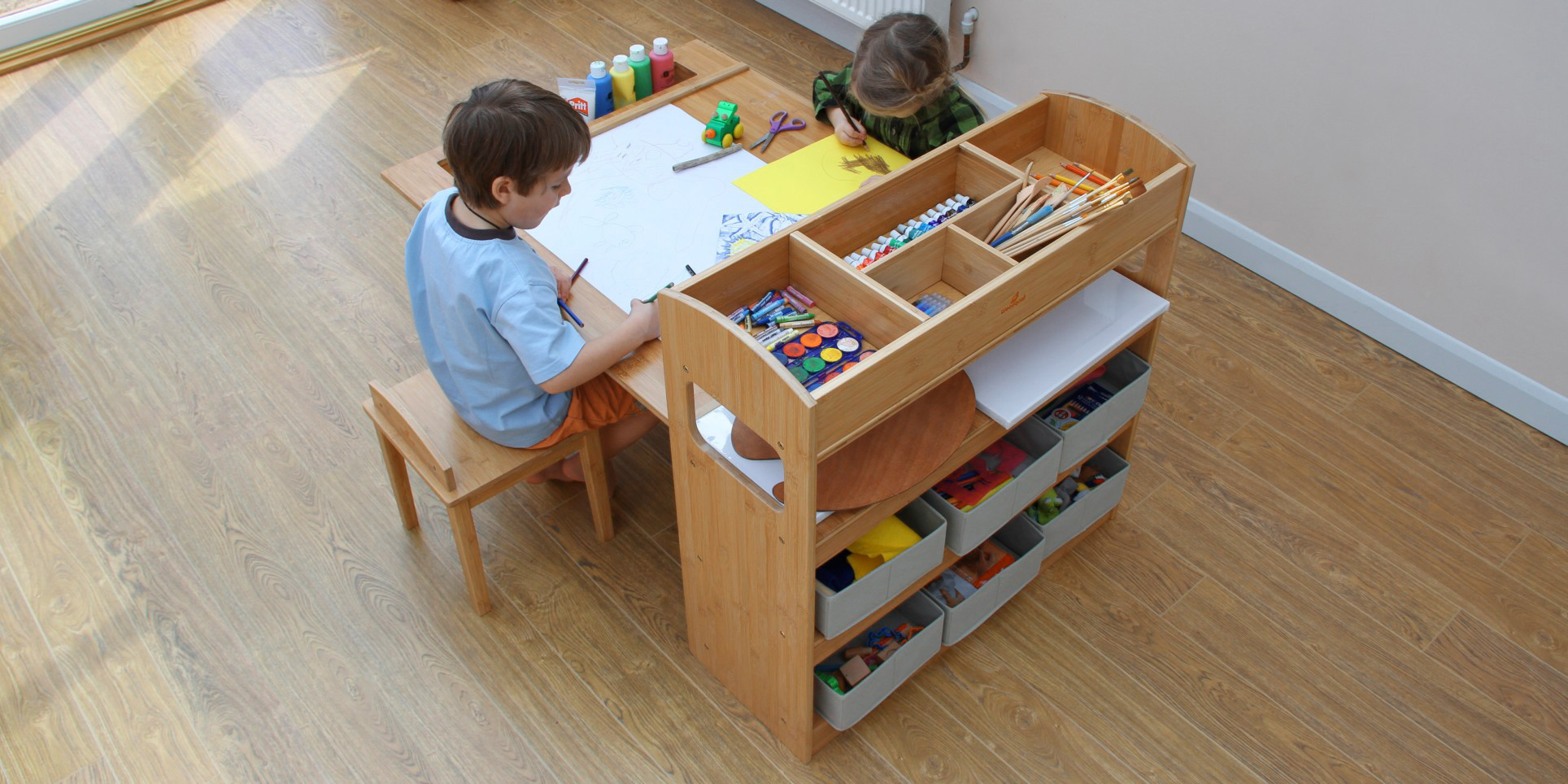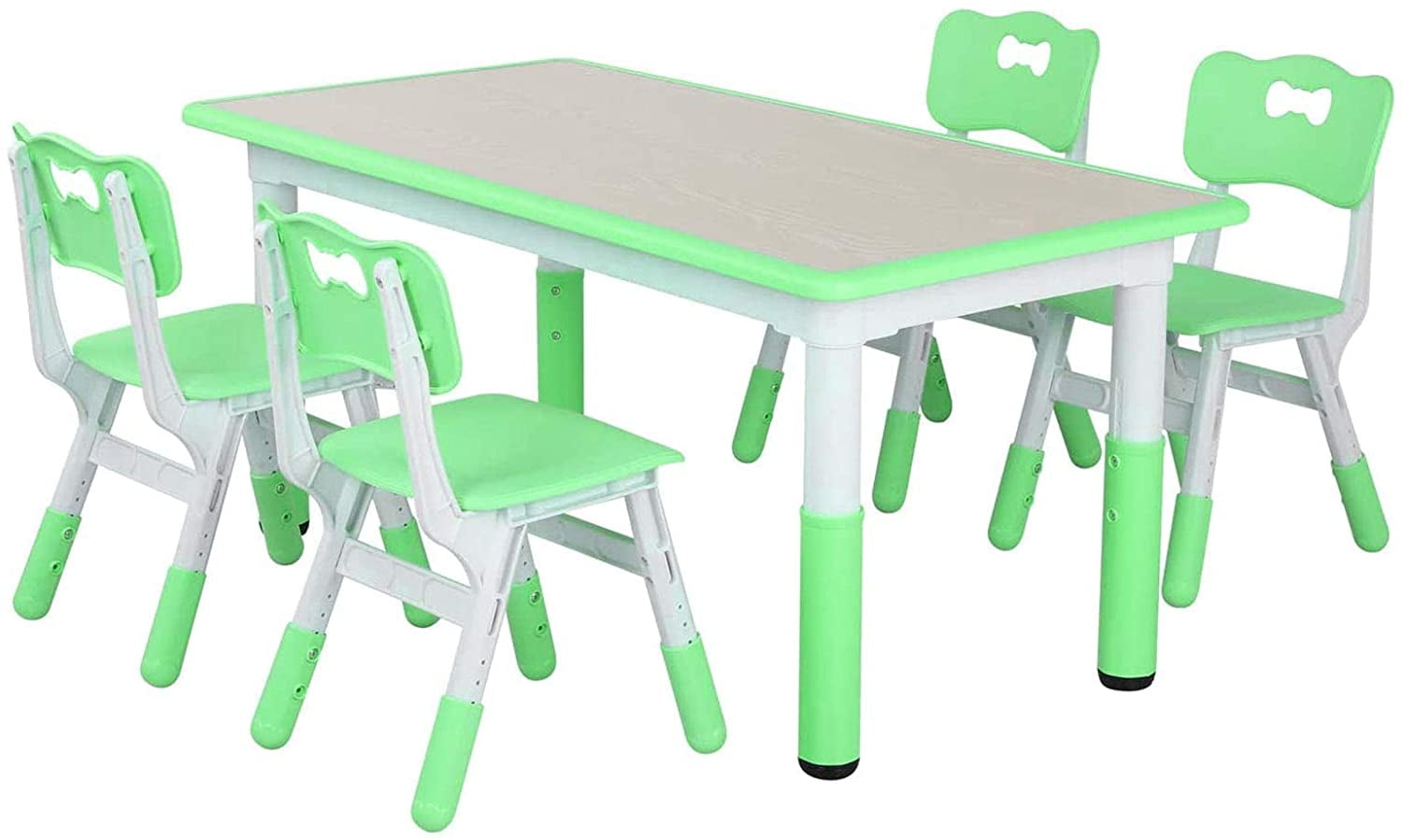Benefits of a Kids’ Art Table and Chair Set

A dedicated art space for children can be a game-changer, fostering their creativity, promoting independence, and encouraging organized play. A kids’ art table and chair set provides a designated area for artistic exploration, allowing them to express themselves freely and develop essential skills.
Encouraging Creativity and Independence
A designated art space encourages children to explore their creativity without any limitations. It provides them with a dedicated area to experiment with different art materials, techniques, and ideas. The independence fostered by having their own space allows children to express themselves freely and confidently, leading to a sense of ownership and pride in their artistic creations.
Improving Focus and Concentration, Kids little art table and chair
A dedicated art table and chair set can improve focus and concentration during art activities. By having a designated space for art, children can create a mental association between the table and the act of creating, making it easier for them to settle down and focus on their projects.
Making the Art Space Inviting and Engaging
To make the art space more inviting and engaging, consider the following tips:
- Bright and Colorful Surroundings: Use bright colors and fun patterns to create a cheerful and stimulating environment. Consider adding colorful storage bins or shelves to organize art supplies and keep the space tidy.
- Comfortable Seating: Ensure the chair is comfortable and the right height for the child to sit comfortably and focus on their artwork. Consider using a chair with adjustable height for growing children.
- Good Lighting: Adequate lighting is essential for children to see their artwork clearly and avoid eye strain. Natural light is ideal, but a desk lamp can be a good alternative for darker areas.
- Inspirational Artwork: Display inspiring artwork or photographs around the art table to spark children’s creativity and imagination. You can also create a gallery wall showcasing their masterpieces.
- Accessible Art Supplies: Keep art supplies organized and easily accessible so children can quickly grab what they need and start creating. Consider using clear containers or labels to help them find specific items.
Choosing the Right Kids’ Art Table and Chair Set

Selecting the right kids’ art table and chair set is crucial for fostering creativity and ensuring a comfortable and safe art experience. It’s essential to consider factors like age, height, and materials to find the perfect fit for your child.
Size and Height
The ideal size and height of the table and chair depend on your child’s age and height.
- For toddlers (ages 2-3), a small table with a height of around 18 inches and a chair with a seat height of 10-12 inches is suitable. This allows them to reach the table comfortably and participate in art activities.
- Preschoolers (ages 4-5) can benefit from a table height of 20-22 inches and a chair with a seat height of 12-14 inches. This provides them with a more stable and comfortable working surface.
- For elementary school children (ages 6-12), a table height of 24-26 inches and a chair with a seat height of 16-18 inches is recommended. This allows for a more adult-like posture and greater ease of use.
When choosing a table and chair set, it’s essential to ensure that the child’s feet can comfortably rest on the floor, providing proper posture and stability.
Materials
Kids’ art tables and chairs are made from various materials, each with its own set of pros and cons.
- Wood: Wood is a durable and natural material that provides a classic and elegant look. It is also easy to clean and can be painted or stained to match your child’s room décor. However, wood can be more expensive than other materials and may require more maintenance.
- Plastic: Plastic is lightweight, affordable, and easy to clean. It’s also available in a wide range of colors and designs, making it a popular choice for kids’ furniture. However, plastic can be less durable than wood and may not be as aesthetically pleasing.
- Metal: Metal is sturdy and durable, making it a good choice for high-traffic areas. It’s also often available in bright and colorful finishes. However, metal can be cold and uncomfortable to sit on, and it may be prone to scratches and dents.
Ultimately, the best material for your child’s art table and chair set will depend on your budget, your child’s needs, and your personal preferences.
Safety Features
Safety should be a top priority when choosing a kids’ art table and chair set. Look for features such as:
- Rounded edges: This helps to prevent injuries from sharp corners and edges.
- Stable construction: The table and chair should be sturdy and well-constructed to prevent tipping over. Make sure the table has a wide base and that the chair legs are stable.
- Non-toxic materials: Choose furniture made from non-toxic materials that are safe for your child. Avoid furniture made from lead or other harmful chemicals.
By considering these safety features, you can ensure that your child has a safe and enjoyable art experience.
Creative Activities for Kids’ Art Tables: Kids Little Art Table And Chair

A kids’ art table is a fantastic space for unleashing creativity and fostering a love for art. With a dedicated area for artistic endeavors, children can explore various mediums and techniques, developing their imagination and fine motor skills.
Drawing and Painting
Drawing and painting are fundamental art forms that encourage self-expression and exploration of colors and shapes.
- Drawing with crayons, colored pencils, and markers: These tools provide a range of colors and textures, allowing children to experiment with different strokes and techniques. Children can draw simple shapes, animals, or imaginative scenes.
- Watercolor painting: Watercolors are a vibrant and versatile medium that allows for blending and layering colors. Children can paint landscapes, flowers, or abstract designs.
- Finger painting: This sensory activity allows children to use their hands to create colorful and messy artwork. It’s a fun and engaging way to explore colors and textures.
Crafting
Crafting activities provide children with opportunities to use their hands and imaginations to create unique and personalized projects.
- Paper crafts: Paper is a versatile material that can be used for a wide range of crafts, such as origami, paper airplanes, and paper dolls. Children can learn basic folding techniques and experiment with different designs.
- Beading and stringing: Beading and stringing activities help children develop fine motor skills and creativity. They can create necklaces, bracelets, or other decorative items using colorful beads and string.
- Collage: Collage is a fun and creative way to combine different materials, such as paper, fabric, and glitter, to create unique artwork. Children can cut out shapes, images, and textures to create abstract or representational designs.
Play Dough and Clay
Play dough and clay are tactile and malleable materials that encourage children to explore their creativity and develop fine motor skills.
- Play dough sculpting: Play dough can be used to create a wide range of shapes, animals, and objects. Children can experiment with different colors and textures to create unique sculptures.
- Clay modeling: Clay is a more durable material than play dough, allowing children to create more detailed and intricate sculptures. They can learn basic modeling techniques, such as rolling, pinching, and shaping.
- Impressions and textures: Children can use play dough or clay to make impressions of objects, such as leaves, buttons, or toys. This activity helps them explore textures and patterns.
Sensory Exploration
Sensory exploration activities engage children’s senses and stimulate their creativity.
- Sand art: Sand is a versatile material that can be used for a variety of art activities, such as creating sandcastles, drawing in sand, or making sand mandalas. Children can explore different textures and colors of sand.
- Nature art: Nature provides a wealth of materials for art projects. Children can collect leaves, sticks, stones, and other natural objects to create collages, sculptures, or other art forms.
- Water play: Water is a fun and engaging material for sensory exploration. Children can use water to paint, create watercolors, or simply play with water toys.
Kids little art table and chair – Kids’ little art tables and chairs offer a dedicated space for creativity, but sometimes need a refresh. Just like updating a classic armchair with a new poang cover on pello chair , a simple change of color or fabric can transform a child’s art table into a vibrant focal point.
This simple upgrade encourages a fresh perspective and sparks new ideas for budding artists.
Kids’ little art tables and chairs are often a staple in playrooms and home offices, fostering creativity and providing a dedicated space for artistic endeavors. The world of children’s furniture extends beyond traditional designs, however, as seen in the whimsical world of bean bag chair clipart , which captures the essence of comfort and playfulness.
While bean bag chairs might not be the most practical choice for a dedicated art space, they certainly offer a unique and inviting alternative to traditional seating.
